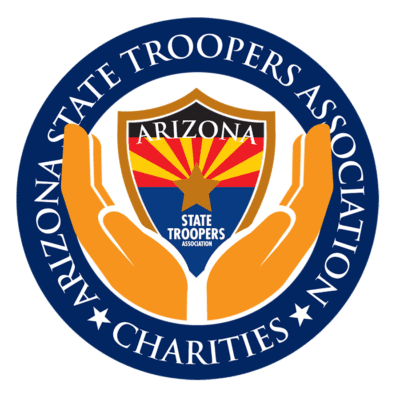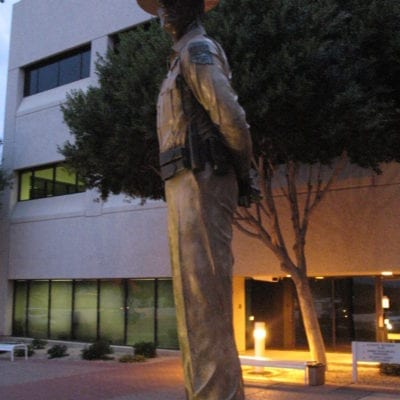Sponsored by Smiths Detection
By Yoona Ha, PoliceOne BrandFocus Staff
Today’s opioid epidemic is the deadliest drug crisis in American history. In the U.S., opioid overdoses are the leading cause of death for people under 50 years old (beating gun violence and auto accidents). In 2016, we saw the highest increase of fentanyl overdose deaths, and that same year, 64,000 people died from an opioid overdose.
To respond to this public health crisis, law enforcement officials, lawmakers, healthcare providers and public health experts have all focused on finding ways to solve the opioid epidemic. Police officers are at the front line in addressing this crisis – they’re the ones who regularly witness, and respond to, the consequences of addiction.
Finding and tracking down the opioid pipeline is one of many ways in which law enforcement officers are tackling the crisis. More officers are coming into contact with synthetic opioids like fentanyl, which is 50 times stronger than heroin. This can be a problem when you have officials who are unaware of the health risks that accidental exposure can pose to first responders and law enforcement personnel. In some cases, officers have become severely ill after being accidentally exposed to fentanyl.
Because officers often don’t have the right equipment to detect or rapidly identify fentanyl, they often don’t know how to protect themselves. To give officers a better sense of how prevalent fentanyl abuse is in their communities, we talked with Dr. Michael Frunzi, a senior scientist and product manager for Smiths Detection, who has been tracking instances of fentanyl seizures, overdoses and deaths in the U.S. and Canada.
Not surprisingly, the data Frunzi shared show regional differences, and not all states struggle with just fentanyl. Data from the Centers for Disease Control and Prevention reveals that prescription painkillers and heroin abuse have also killed many.
In the Northeast, fentanyl is the No. 1 opioid killer
The Northeast has been hard hit by fentanyl. With 1,614 people dead in 2016, New York had the highest number of overdose deaths caused by synthetic opioids like fentanyl. Second was Massachusetts, which saw 1,550 victims that year.
According to Frunzi, states with the highest overdose rates also often had high seizure rates as well. Massachusetts is a prime example. As the state with the second highest number of fentanyl cases, Massachusetts has many officers who face the serious threat of frequent exposure to fentanyl. In response, some departments have started to use the Target-ID, a handheld device that can detect up to 2,500 kinds of illicit substances in a matter of seconds.
“It can identify a substance’s exact chemical fingerprint,” Frunzi said.
In the Midwest, opioid use is a mixed bag
An analysis of data from Midwestern states revealed a more complex picture of how opiates were abused across state lines. Ohio stood out as the state for the highest fentanyl-related overdoses, with 2,296 deaths in 2016. Michigan, Ohio and Missouri also grappled with high rates of deaths from synthetic opioid overdoses.
In Wisconsin and Minnesota, heroin abuse was the leading cause of opioid-fueled deaths. In South Dakota, North Dakota, Nebraska, Minnesota, Iowa and Kansas, oxycodone and hydrocodone addiction claimed the lives of 366 people.
In the South, natural and semi-synthetic opioids were commonly used
Oxycodone, the active ingredient in OxyContin, and hydrocodone, the active ingredient in Vicodin and Lortab, are powerful prescription painkillers that were an issue for many Southern states.
In Arkansas, Georgia, Mississippi, North Carolina, Oklahoma, South Carolina and Tennessee, natural and semi-synthetic opioids caused the highest number of opioid-related deaths. Fentanyl was most responsible for fatal overdoses in Alabama, Delaware, Florida, Kentucky, Virginia and West Virginia.
Like the South, the West also has a prescription painkiller problem
Natural and semi-synthetic opioids were the leading cause of overdoses in many Western states in 2016, including: California, Alaska, Arizona, Hawaii, Idaho, Wyoming, Washington, Utah, Nevada and Oregon. New Mexico and Colorado had problems with heroin, with 395 deaths attributable to heroin overdoses. Fentanyl was responsible for 14 deaths in Montana.
New tools are available to better protect officers and serve communities
The wet chemical color tests that are the most commonly used method to identify white powder substances don’t reliably test for fentanyl. As the dangers of fentanyl become more widely known, officers are looking for safer ways to detect and identify fentanyl in the field without having to send drug samples to labs for testing.
In response, scientists have developed a tool that’s more accurate than colormetric tests. The Target-ID is an example of an easy-to-use, handheld device that officers can use to identify pills, powders and other unknown substances within a matter of seconds. Using infrared light, the machine picks up on the molecular fingerprint of the substance and compares it to a reference library of drug compounds.
Frunzi suggests that departments can make their response to the opioid crisis more strategic by analyzing the data from devices like the Target-ID to help officers both identify fentanyl on the scene and in further detective work by tracking trends.
“We work directly with officers out in the field to identify emerging fentanyl trends,” said Frunzi. He added that more broadly shared knowledge of opioid trends at a local level can help officers to partner with other agencies and public health experts to form an appropriate response strategy to the crisis.
Support from Smiths Detection scientists is also available for officers who need help interpreting test results through their 24/7 ReachBackID hotline.
Having a better response strategy for narcotics field testing can help your department more effectively address the unique opioid threats in your community. And the cost of the screening devices don’t have to keep your department from getting the detection tools you need. Find out if your department can apply for federal, state and local grants and obtain free assistance at PoliceGrantsHelp.com.






